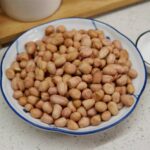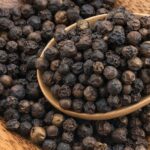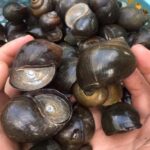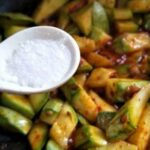Have you ever heard of or come across the vegetable “Rau Nhót”? This unique plant, also known as “lộc trời”, has suddenly become a sought-after delicacy. Today, we will introduce you to Rau Nhót, including the best ways to prepare and cook it.
1What is Rau Nhót?
Rau Nhót, also called “rau còng còng” or “rau sương muối,” is a herbaceous plant that grows to a height of 10 to 15 cm. It has a light pink color, is succulent, and has many small branches. Its leaves resemble those of the “hoa mười giờ” flower, and it typically grows wild in shrimp ponds, marshes, and salt fields, among other places.
These plants often form wild clumps, with deep roots that absorb “dew” and breathe air. This vegetable is also a specialty in Cat Ba, where locals poetically refer to it as “lộc trời” (heaven’s blessing).

Rau Nhót, poetically known as “lộc trời”
2How to Prepare and Cook Rau Nhót
After gathering Rau Nhót, the first step is to clean and soak it in water for about 1 to 2 hours to reduce its saltiness. Then, give it a quick final rinse before boiling. Once the vegetable is cooked, squeeze out the excess water and use a fork or chopsticks to separate the strands.

Clean the Rau Nhót before cooking
Now, the basic preparation is complete, and you can choose your favorite way to cook it. Simply boiling and dipping Rau Nhót in soy sauce is a delicious way to enjoy its natural flavor. If you prefer a stir-fry, try cooking Rau Nhót with shrimp, clams, garlic, and other ingredients of your choice. Feel free to get creative with your favorite combinations!
Another popular dish is a Rau Nhót salad. After cleaning the vegetable, mix it with herbs, lime leaves, sugar, chili, and roasted peanuts or sesame seeds. The result is a unique, refreshing, crunchy, and slightly salty dish, unlike anything you’ve tasted before. It goes perfectly with rice noodles or rice paper wraps.
Due to its natural growth environment, free from chemical fertilizers and pesticides, Rau Nhót has a distinctive flavor.

Enjoying Rau Nhót
3Price of Rau Nhót
Previously, Rau Nhót was quite inexpensive, ranging from 5,000 to 8,000 VND per kg. However, prices have recently increased to 25,000-30,000 VND per kg.
While you can still find it at a lower price in Cat Ba, in Hanoi and Vinh, it may be available in specialty markets or through importers at a higher cost, ranging from 70,000 to 100,000 VND per kg.

Rau Nhót prices vary by region
We hope this information has been helpful, and thank you for reading. Wishing you a wonderful day ahead!
Buy high-quality, fresh vegetables from us today!
Frequently asked questions
Rau Nhót, also known as ‘rau còng còng’ or ‘rau sương muối’, is a herbaceous plant that typically grows to a height of 10-15 cm. It has a light pink color, is succulent, and has many small branches. Its leaves resemble those of the ‘hoa mười giờ’ flower. Rau Nhót usually grows wild in shrimp ponds, marshes, and salt fields, among other places.
First, clean and soak the vegetable in water for about 1-2 hours to reduce its saltiness. Then, give it a quick final rinse before boiling. Once cooked, squeeze out the excess water and separate the strands with a fork or chopsticks. After that, you can choose your preferred cooking method. Boiling and dipping Rau Nhót in soy sauce is a simple yet delicious option. Alternatively, you can stir-fry it with shrimp, clams, garlic, and other ingredients of your choice. Rau Nhót salad is another popular choice, where you mix the vegetable with herbs, lime leaves, sugar, chili, and roasted peanuts or sesame seeds.
The price of Rau Nhót has recently increased. Previously, it ranged from 5,000 to 8,000 VND per kg, but now it costs around 25,000-30,000 VND per kg. In Hanoi and Vinh, you may find it in specialty markets or through importers at a higher price, ranging from 70,000 to 100,000 VND per kg.
You may also like
The Secret to Succulent Snails: A Simple Trick to Keep Them Plump and Tasty
Introducing the ultimate solution to keep your snails plump and healthy – even if you’re not ready to boil them yet! This innovative method is a game-changer for anyone who wants to ensure their snails stay in tip-top shape. With this secret weapon, you can rest assured that your snails will maintain their fullness and vitality. Stay tuned to uncover the surprising answer!



































